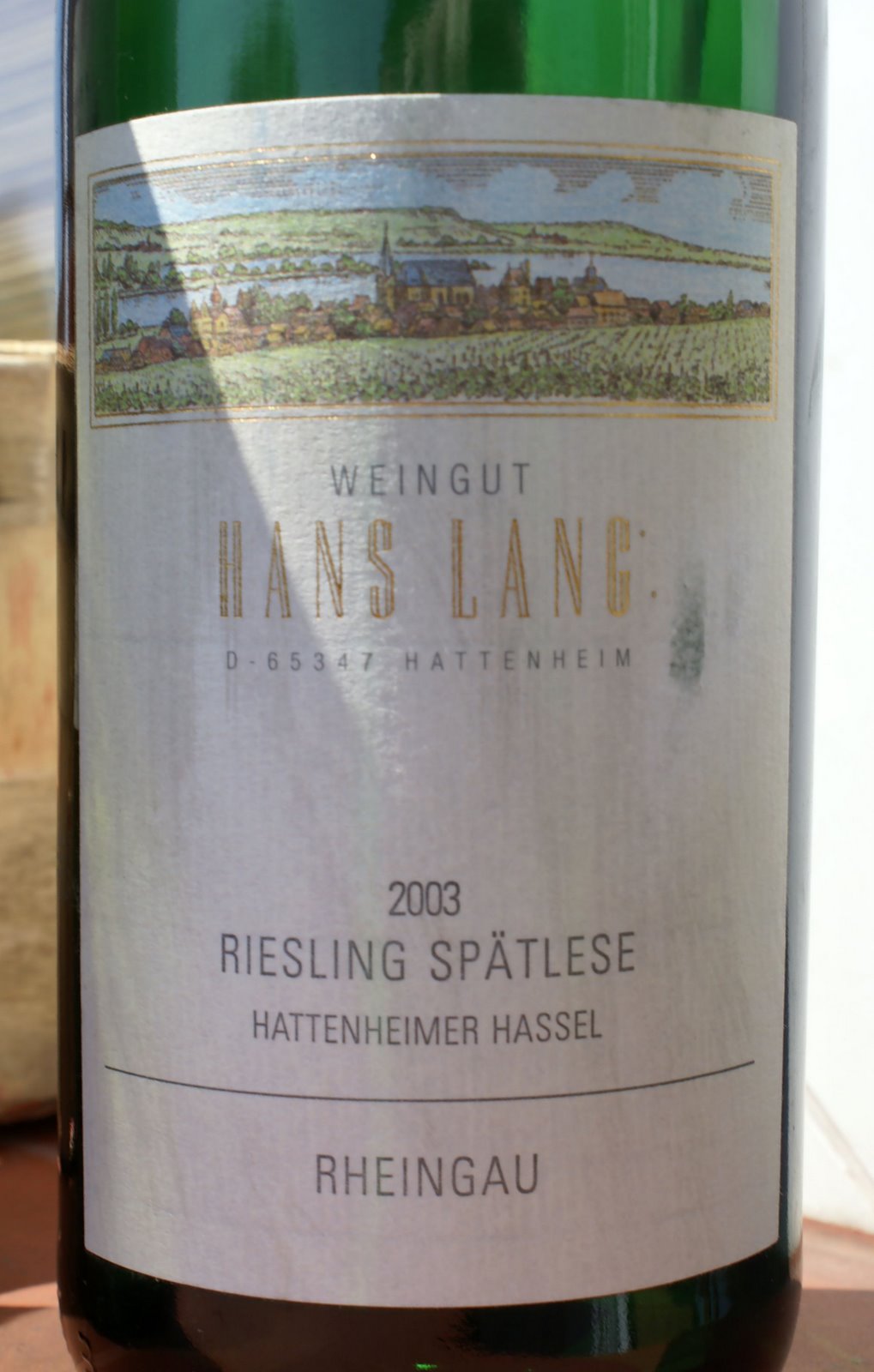Hans Lang Hattenheimer Hassel Riesling Spätlese 2003
Posted on 13 July 2009
 I’ve already blogged on the 2003 vintage for European white wines (here and here). Expected to have a 2003-free cellar by now, but there’s always the lone bottle lurking here and there where I least expect it. I discovered a half-dozen on the German Spätlese shelf. For German sweet wines, it was actually a fairly good vintage, beating records of ripeness throughout the country as grapes dried on the vine during that torrid summer without the usual help of botrytis.
I’ve already blogged on the 2003 vintage for European white wines (here and here). Expected to have a 2003-free cellar by now, but there’s always the lone bottle lurking here and there where I least expect it. I discovered a half-dozen on the German Spätlese shelf. For German sweet wines, it was actually a fairly good vintage, beating records of ripeness throughout the country as grapes dried on the vine during that torrid summer without the usual help of botrytis.
This Hattenheimer Hassel Riesling Spätlese 2003 from the overperforming estate of
Hans Lang is a case in point. The colour is fairly young (what vinous practice likes to describe as ‘plate gold’), and there’s really not a hint of evolution save for a minor note of brown sugar caramel. The nose is explosive, spicy, very Rieslingey, and really engaging. The palate offers the same register with an extra splash of lemony pithiness; it’s really mouth-watering. There is not a lot of concentration, in fact a bit of the wateriness I consider a hallmark of classic German Riesling. This is arguable, but I prefer a Spätlese to taste of Spätlese and not downgraded Auslese (as seems to be the ubiquitous fashion throughout Germany). This lemony acidity has preserved the wine, and remaining bottles (I have none) could easily live to see their 15th anniversaries.This was a fine performance by a wine style you’d expect to age well even in 2003. But I recently opened Lang’s 2003 Hattenheimer Wisselbrunnen Riesling Erste Lage. This grand cru level wine only has 10.5g of residual sugar (and 13.5% alc.). In ripe and overripe vintages these late-harvested dry Rieslings are usually the first to surrender to alcohol and fatness. Not here. An admirably poised and zesty 2003 with little alcohol and, again, almost no evolution. Primary fruit is a bit down, leaving a healthy amount of punchy minerality. Tastes dry and actually quite fresh. Not an immensely complex or deep wine but could continue ageing in search of these characteristics.
I was really surprised by the excellent showing of these two wines and enquired the owner Mrs. Gabriele Lang about the vintage. She says that in the central Rheingau around Hattenheim, loess soils dominate (as opposed to the more usual slate). The very rainy 2002/2003 winter helped build considerable water reserved, which the loess soils then released on the stressed vines during that tropical summer. Mrs. Lang considers 2003 one of the top vintages for this part of the region. This explains why these two bottles were so delicious, and shows the limitation of ‘vintage overviews’ that are the wine press’ workhorse.

